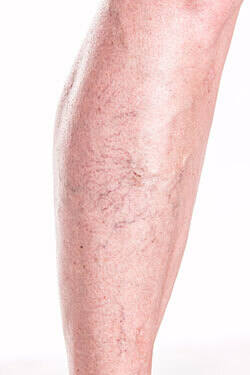Sclerotherapy

What to Expect During Sclerotherapy Treatment
During Sclerotherapy treatment, a tiny needle is used to inject the vein with a salt solution. The vein collapses, the body absorbs the now non-functioning vessel and it simply disappears. The typical treatment will have several tiny injections that last about 15 minutes. It is possible to have more than one vein injected in a session, but this will be decided upon by your provided. After the injection the area is compressed with either support hose or pressured dressing. There’s little downtime.
How to Prepare for Sclerotherapy Treatment
It’s important to speak to your provider about the specific pre-treatment protocol for sclerotherapy. However, the general guidelines include avoidance of anti-inflammatory medications about 72 hours prior to the treatment. It’s also important not to apply lotion to the legs prior to the sclerotherapy treatment for leg veins. Your doctor may test you for any allergies to the salt solution. Typically, allergic reactions to the solution are very rare and do not cause serious issues.
What to Expect After Sclerotherapy Treatment?
The side effects of sclerotherapy are typically mild and clear quickly. The side effects can include temporary hyperpigmentation and slight cramping directly following the treatment. You may also experience swelling, itching or bruising at the injection site. You should avoid all aerobic activity for a few days following the procedure. It may be necessary to have repeat treatments to completely destroy the vein.
When is the Best Time to Have Sclerotherapy?
Sclerotherapy treatments are typically recommended in the fall, winter and spring seasons. One of the most common side effects from sclerotherapy is hyper-pigmentation int the treated area, which may last a few weeks after treatment of a vein. This is why sclerotherapy treatment is best done in pants season. It is also recommended to wear compression stockings after treatment, which is not ideal in the hot summer sun.
Are You a Candidate for Sclerotherapy?
Before receiving a sclerotherapy treatment, it’s essential to meet with a dermatology provider to discuss if you’re a candidate for the treatment. If you’re pregnant, you won’t be eligible to undergo a sclerotherapy treatment. If you have a history of blood clots, your provider will asses if you can have sclerotherapy.
All sclerotherapy treatments take place in our dermatology offices and are performed by a dermatology provider. To find out if you’re a candidate for sclerotherapy or to book a consultation, call 1-844-DERM-DOC or click here to email us.
